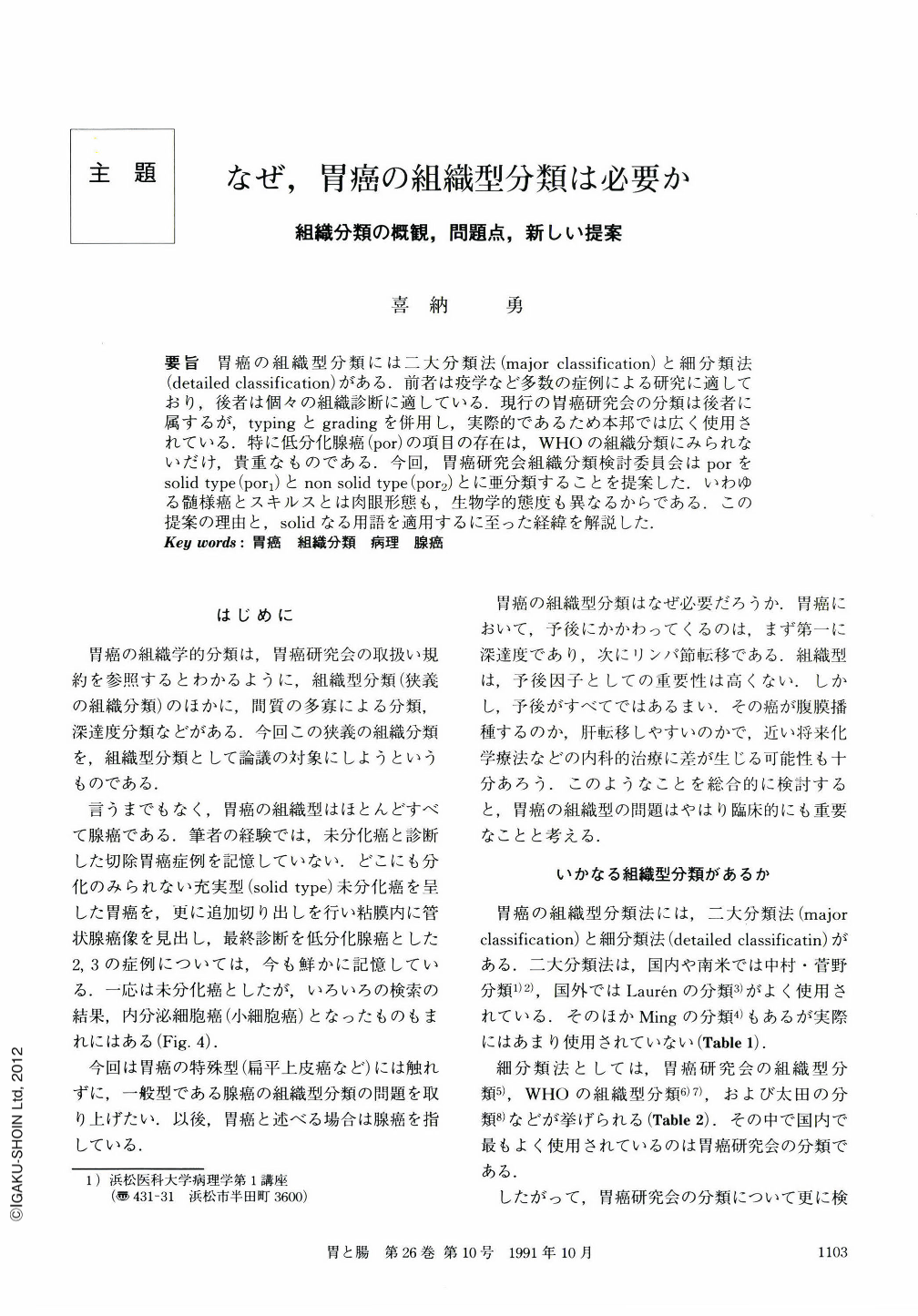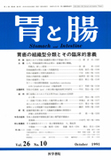Japanese
English
- 有料閲覧
- Abstract 文献概要
- 1ページ目 Look Inside
要旨 胃癌の組織型分類には二大分類法(major classification)と細分類法(detailed classification)がある.前者は疫学など多数の症例による研究に適しており,後者は個々の組織診断に適している.現行の胃癌研究会の分類は後者に属するが,typingとgradingを併用し,実際的であるため本邦では広く使用されている.特に低分化腺癌(por)の項目の存在は,WHOの組織分類にみられないだけ,貴重なものである.今回,胃癌研究会組織分類検討委員会はporをsolid type(por1)とnon solid type(por2)とに亜分類することを提案した.いわゆる髄様癌とスキルスとは肉眼形態も,生物学的態度も異なるからである.この提案の理由と,solidなる用語を適用するに至った経緯を解説した.
There are two types of histological classification of gastric carcinoma, i.e., major classification and detailed classification. Major classification includes Nakamura-Sugano's differentiated type and undifferentiated type,Lauren's intestinal type and diffuse type, Ming's expanding type and infiltrative type. Detailed classification includes classification by Japanese Research Society for Gastric Cancer (JRSGC), typing by WHO and Oota's classification.
In WHO classification there is no item of poorly differentiated adenocarcinoma causing difficulty in general use. In classification of JRSGC, the item of poorly differentiated adenocarcinoma is cited, comprising about 30-40% of all gastric carcinomas.
Poorly differentiated adenocarcinoma of the stomach ranges from scirrhous carcinoma with diffuse infiltration to medullary carcinoma forming a well defined mass. Most scirrhous carcinomas exhibit Borrmann 4, while medullary carcinomas Borrmann 2 or 3. Consequently the committee for histological classification of gastric carcinoma of JRSGC proposed a subclassification of poorly differentiated adenocarcinoma after long discussion, that is, solid type and non solid type. Solid type is composed of solid nests of poorly differentiated adenocarcinoma with no apparent tubular formation and little stroma (medullary). Non solid type comprises poorly differentiated adenocarcinomas other than solid type. The stroma of this type is often either abundant (scirrhous carcinoma) or not abundant, but not little (intermediate between medullary and scirrhous). Approximately 80% of poorly differentiated adenocarcinoma is non solid type and the remaining 20% solid type. Most of the solid type can be categorized in differentiated type carcinoma according to Nakamura-Sugano's major classification.

Copyright © 1991, Igaku-Shoin Ltd. All rights reserved.


